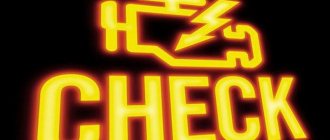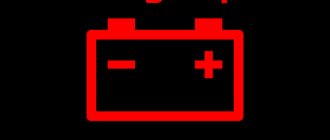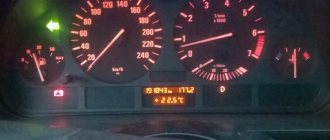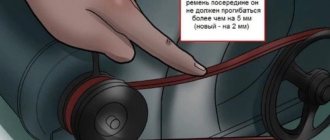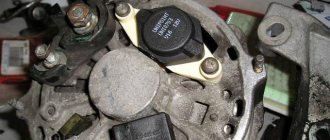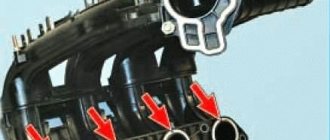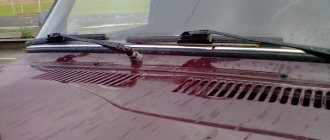A car battery is a storehouse of electrical energy, the renewable supply of which occurs due to an electrochemical reaction in several cells. Each bank provides equal amounts of energy. The elements are connected in series, the voltage in the battery is equal to the sum of the resulting potential differences of all banks. If one element fails, the battery becomes unusable. How to find out the cause of the malfunction - is the bank shorted in the battery or is there an open circuit?
Battery banks are shorted - symptoms
Here is a classic lead acid battery consisting of 6 cans. Each of them is composed of pairs of oppositely polar plates. Their contacts are collected into a common collector, connected in series and connected to the cover with two terminals. Modern cans have a different design, but the layout of the cans and cells is the same.
With a series connection, the cell voltages are summed up, and the capacity is determined by the most clogged bank. To charge the battery, voltage is applied to the terminals and current flows through the storage areas. Why do banks short circuit in a lead-acid battery? If for some reason the plates in the jar get closer together, the walls swell, a jumper is created, and the cell is closed. It happens that a contact bridge is created by a piece of crumbled putty or scale.
How can you check if the battery is short-circuited? When measuring the voltage at the terminals, a dip will be detected. For example, a 12 V battery consists of 6 cans with a total voltage of 2.1 * 6 = 12.6 V. The voltage drops to 10.5-11.0 V - look for a closed can.
One of the plates inside the jar is lead, and the other has a layer of active substance applied to it. If the electrolyte level is violated or overcharged, the mass may crumble and short-circuit the plates.
Mechanical damage from the outside can lead to deformation. It is possible that the battery case is swollen, and then internal short circuits of the plates in the banks are possible. This can happen when the electrolyte freezes and from overcharging a maintenance-free battery.
Symptoms of a shorted battery bank are loss of voltage, heating of the battery case. The battery does not charge to 12 volts, is unable to crank the starter, and requires replacement. Sometimes when charging you can hear the smell of rotten eggs - hydrogen sulfide gas is released.
Battery malfunctions. Elimination. Repair
Battery malfunctions manifest themselves in the fact that it stops supplying the required current to the load or that mechanical defects, cracks appear on it, and electrolyte flows through them.
Cracks
Cracks can occur due to mechanical stress or impact. But most often they occur after the battery fails. A well-charged battery can withstand low temperatures down to -45 degrees. But if it is practically discharged, it will freeze at -15. Regular maintenance will protect against freezing.
The inability of the battery to perform its functions, that is, to power the load with mechanical integrity, can be caused by the following reasons:
Deep discharge
As I already wrote, severely discharged batteries cannot be recharged if the charge is controlled by the voltage on the battery (for example, in a car). This fault can be easily eliminated by charging the battery with a fixed voltage with current limitation or charging with a fixed low current (3% of the rated capacity) with manual density control every hour. We charge the battery to a density corresponding to a full charge. After such recharging, the battery is usually (if it has not deteriorated due to deep discharge) again ready for use in the automotive system and will be charged from the generator.
There are times when only one, two or three banks are severely discharged. So, if the contacts of each bank are pulled out, it is better to charge each discharged bank separately with a fixed current with density control. If there are no contacts, you can charge the entire battery with a fixed current with density control. But for this you will need a charger of 24 volts or more. Otherwise, you will not be able to supply the required fixed current through the well-charged canisters. Acid batteries generally withstand recharging well under a variety of conditions. Firstly, you need to regularly add water to already loaded cans; it will decompose in them. Secondly, charging must be done with a small current. Once fully charged, the can begins to heat up, it can no longer store energy and dissipates whatever it receives as heat. Cans should not be overheated. If the current is small, this will not happen.
As a result, all banks will charge fees gradually. Some before, some after. Then the battery can be used as usual.
Closing the jar
Due to improper use or simply wear, the plates in the jar may close. In addition, they cannot close completely except through a thin porous oxide bridge. The bank closing sign has such an effect. We charge the battery as described above. But the density does not increase in one or more banks. They cannot be charged. This is closure. Another option is that you can charge, but after a day the density of the electrolyte itself decreases again. Usually this is a sentence. The battery can be transported with lead or cast iron weights. But if you have access to the contacts of a closed bank, you can try to save the bank. The chances of success are slim, but what are we missing? Let's take a DC inverter welding machine. We do not include it in the network. We connect banks less to less, more to more. We set the current to 250 A. We put on safety glasses and clothing (there will be a bright spark and possibly electrolyte splashes). All battery spark plugs must be screwed in, otherwise a spark may cause an explosion of gases in the battery. We take a welder and move as far as possible; we put a protective partition between us and the battery. The battery may actually explode. Turn on the welding machine for a short time. You can try turning it on several times. Large current can burn out the short circuit and reset the bank. After the procedure, if the battery is intact, you can try to charge it and find out if it worked.
Recharging, changing the polarity of the can
This effect can be achieved if regular maintenance is not carried out. The bank will be severely drained and you will continue to use the battery. Other banks supply current, and it begins to charge with reverse polarity. Remember that the material of both plates is almost the same. This problem can also be cured by deep discharging one or more cans, charging with a small fixed current with constant density control and adding distilled water to healthy cans.
Unfortunately, errors periodically appear in articles; they are corrected, articles are supplemented, developed, and new ones are prepared. Subscribe to the news to stay informed.
Sulfation Causes of sulfation, loss of capacity of a car battery. Know more.
I have a fairly old battery. He behaved normally, as expected. But in the last month (July) after heavy rain, it was thrown off while being installed on the car. The fact that it is discharged is nothing strange - the car has not been used for a long time. Another thing is unclear. Voltage at the terminals (the battery was connected to the on-board network, i.e. the grounding switch was closed, but bare Read the answer.
While charging the 12V battery, it supplied a voltage of 24V and a current of about 7A for about 5 hours. The battery naturally discharges. What happened to it (sheet metal short circuit, layer collapse)? Can I be cured? Read the answer.
Goodbye! I have a question for you, a new acid-acid battery for motorcycles, I suspect that there is a crack in the bridge between the embankments. Is it possible to cure a battery without disassembling it, using some “chemical” method? Thanks for the answer. Read the answer.
Hello. I bought a new battery and started pouring electrolyte into the first jar, the second was full. Completed the third, completed the fourth, etc. Can banks communicate with each other? I took it to the store and they said maybe. And I doubt something. Thank you. Read the answer.
My battery usually has five cells charging and one cell in the center not charging at all. I charged the battery with a current of 2.5 amperes at first for 24 hours, there was no positive result, then again the same thing, but the bank did not charge. The car starts well. What could this lead to? Read the answer.
Hello, tell me why in a new battery, when fully charged, the density is somewhere around 1.17? But it works properly, no problems arise (we measured the density on a charged battery and in a warm room where the battery was heated for several days). Thank you. (Quote from the first question). The fact is that I am not sure that the electrolyte in the battery was initially filled normally. Read the answer.
Hello, why can't you change the polarity of the battery? Having charged a completely discharged battery, I reversed the polarity, the battery was charging, but quickly discharged and became + - and vice versa, how is this possible? Read the answer.
Insulation to retain heat. Warm-up, typical mistakes, how to do it correctly.
Injection engine design. Injection faults. Injection engine design. General operating principle. Overview of components and faults
How to deal with knocking in the car. What is detonation? How this manifests itself is evident in the internal combustion engine.
Detonation and octane. Effect of additives. Knock sensor. Operating principle. Ignition time. Octane additives.
Faulty motor? Troito. Decreased potency. Compression measurement. Review of car engine malfunctions. Troito / double Loss of power.
Selection of an analog generator, search for a suitable aftermarket machine. How to choose a cheap (non-original) replacement generator for a car
Signs of a shorted battery bank
Since charge is being redistributed inside, the battery case heats up, which is one of the signs of an internal short circuit. If the battery is serviceable, you can determine the shorted bank during charging. At the moment the voltage rises, the plugs on the cans are open, hydrogen is released from them, and the cans boil. If one does not show signs of life, it is closed. You can check and find the cause of undercharging of the battery in a ventilated area or outside.
If a voltage drop occurs in a maintenance-free battery, the device does not charge to operating voltage, as you can determine if the bank is shorted, or for another reason. Experts advise closing the contacts for 1-3 seconds. A copious discharge will begin from the non-working jar.
Even a maintenance-free battery allows you to see the electrolyte level in the jars through the translucent walls. Signs of a closed jar will be a reduced level of electrolyte - it boils away, sometimes a noticeable change in color to black.
Content
If you have already met with the seller and want to be sure that if you buy a car, the first thing you will have to do is run headlong to the store for a new battery, which usually costs more than 10 thousand rubles, then you have several ways to check the battery by car:
- Inspect the battery externally;
- Measure the voltage on the battery with a multimeter;
- Check the battery with a load fork;
- Check the electrolyte level in the battery.
We will consider each question in detail, but we immediately note that the fourth option, with checking the electrolyte level, is only available for serviceable batteries. But one way or another, there are a number of methods for checking a car battery for performance, and in this article we will look at them.
How to identify a closed cell in a battery
Technically, you can determine a closed bank by measuring the voltage on each bank separately with a voltmeter. To measure the voltage on each bank you need to use a load fork. Under load, the voltage of the can below 1.7 V indicates its defect.
The most reliable testing method is carried out on a completely discharged battery. The battery should produce a voltage of 12 V. The indicator is less by a number that is a multiple of 2 and will determine how many cans have become unusable. In the future, you will need to determine why the bank closed. If the battery is expensive and new, less than 3 years old, it can be revived. But for this you need to have plumbing skills, tools and follow safety precautions.
Measuring voltage with a multimeter
If you do not want to check the condition of the battery “by eye”, or simply want to have accurate results in numerical terms, you will need a device such as a multimeter.
So, how to check a car battery with a multimeter: the device itself has two probes, one of which is red and the other black. In order to measure the voltage on the battery, you need to put the multimeter in measurement mode and place the red probe against the “positive” terminal, and the black probe, respectively, against the “negative” terminal.
The procedure is carried out on the battery terminals without load. If the battery is properly charged, the result on the device will be about 12.6-12.9 volts. This is the normal voltage that should be present on a fully charged battery. If you mess up the colors of the probes, the number will be the same, it will just be displayed with a minus sign.
If the engine is running, then you can also check the operation of the battery with a multimeter, but in this case it will be checked whether it is working together with the generator, as well as the serviceability of the voltage regulator. When the motor is running, the readings should be slightly higher - from 13 to 14 volts. If the indicator is lower, this will mean charging problems for the battery, and if the indicator is higher, the process of water electrolysis will begin.
There is a method to determine the degree of battery discharge by voltage. Voltage 12.5 - says that the battery is 90% charged, voltage 12.1 - 50%, and 12 - 10 percent. Although the method is approximate, it is proven.
Reasons for the short circuit of cans in the battery
The main problem is failure to follow the operating instructions for the car battery. Closely spaced plates, active putty on the gratings, are precisely designed to work under the flood, with voltage within the permissible limits. The crumbled mass, sulfation, and a sharp blow to the body are a prerequisite for the contact of the plates with opposite charges. If one bank is overloaded, it will discharge faster, become sulfated, and the first one will fail.
What should I do to prevent the battery from shorting out and to keep it working for a long time? Keep the battery clean, avoiding unnecessary self-discharge currents. Do not leave a discharged battery for a long time without recharging. In the cold, a discharged battery will freeze because it contains a weak electrolyte. Often, just because of 1 cell of battery, you have to recycle the entire battery. There are several reasons why it can close:
- Factory defects are a warranty case.
- Strong blow to the body.
- Chronic undercharging and overdischarging is the most common cause of malfunction.
Is it worth trying to repair the battery?
If the battery is under warranty, then it should be returned to the store where it was purchased, as this may be a manufacturing defect. They will have to conduct an examination and if it is determined that the battery failed through no fault of the car owner, it will be replaced with a new one.
In old batteries this is an “age-related disease”. In this case, the most correct decision would be to scrap the battery and purchase a new one. In the event that the malfunction is caused by crumbling active substance, the battery can be restored.
If the body is made of light plastic, then it is easy to notice an accumulation of dark mass in the lower part of the closed jar, which should be removed. Efforts to restore the battery by flushing the jar from debris are justified only if the remaining battery cells are in fully working order.
Important! If the bank is shorted, then it is better not to restore the battery and purchase a new one, since it will still not be possible to return the former capacity, starting current and voltage.
Recovering a shorted battery bank
Once it has been possible to understand that the car battery banks are shorted, it is necessary to evaluate the work to restore the cell and compare it with the purchase of a new device. If more than one can is shorted, there is no point in wasting time and effort on repairs. How do you know if there are still jumpers in other elements? They can appear if the layout of the case is disturbed or the connections are loosened.
Step-by-step instructions on how to restore a shorted battery bank.
- Identify a non-working jar based on the listed characteristics.
- Extract the electrolyte using special means, working in glasses and rubber gloves.
- Cut the plastic around the top of the cell.
- Disconnect the jumpers with adjacent elements and carefully remove the package of plates, rinse them from acid.
- Determine the location of the short circuit - a piece of metal, a bent plate, remove sediment at the bottom.
- Place the structure in place as it was, fill in the electrolyte, and secure the lid with glue.
- Fully charge the battery.
This is how lead batteries of older models and those produced in Europe are restored. Maintenance-free batteries must be protected from deep discharge. It is difficult to repair them yourself.
Video
It’s better to see once how specialists eliminate the consequences of shorted cans. How to restore a shorted battery bank, watch the video.
One of the important elements of a car that requires checking is the battery, or battery. The serviceability of the battery and its performance are very important, since it is thanks to the battery that the car starts, and all systems of the car are powered by it: low and high beam headlights, media system and much more.
What to look for
It will be useful for motorists to understand how to find out whether they really have a shorted battery or not.
A classic battery uses lead plates and an electrolyte made from a mixture of distilled water and sulfuric acid. The battery consists of 6 sections. They are called banks. Each jar contains a pair of plates with different polarities. The contacts are collected into a common collector and connected in series. Two terminals are located on the housing cover.
Modern batteries may have a slightly different design. But the layout and equipment of the cans, as well as the cells, remains unchanged.
When the sections are connected in series, the voltage from each bank is summed. Capacity parameters are determined based on the most clogged cans.
To charge the battery, voltage must be applied to the terminals. As a result, the current begins to spread across individual sections.
The question is where the short circuit comes from. There are several options here. The oppositely polar plates come closer and contact each other. The walls swell, a jumper is formed, which leads to a short circuit. A contact bridge can also appear as a result of grease shedding.
You also need to understand that a car battery is truly closed. To do this, check the voltage at the terminals by connecting a voltmeter or a universal multimeter to them. When measuring the voltage, a dip is detected.
As you know, a total of 6 cans of 2.1 V each give 12.6 V. In theory, the battery is fully charged. But the test shows only 10.5-11 V voltage. If this is the case, then you need to look for the problematic section.
The plates inside have a lead base, but are additionally coated with special active substances. If the electrolyte level drops, the battery is overcharged or deeply seated, then the mass often crumbles, which leads to a short circuit.
The possibility of external mechanical damage cannot be excluded. The motorist accidentally dropped the battery while removing or installing it. Or there was an accident. Hence the violation of the internal structure with the resulting short circuit of one or several cans at once.
There were also cases when the electrolyte inside froze. When frozen, the liquid expanded and deformed the walls, damaging the plates. They touched, which became the reason for the short circuit.
Checking the battery voltage
There are several simple signs of how to determine a short circuit in a car battery. This is a check of the voltage that has dropped, as well as the integrity of the case and its temperature. If the battery gets very hot and the walls are swollen, there are few options.
When the battery does not want to be charged even to 12 V, and does not crank the starter, then you will have to change it.
In rare cases, you may notice the smell of rotten eggs when charging. This indicates that the release of hydrogen sulfide has begun. An extremely dangerous phenomenon. Charging must be stopped immediately and the battery itself must be disposed of.
Write-off process
The battery is transferred to a recycling organization.
This is done as follows. The condition of the part being written off is checked in accordance with RD-3112199-1089-02 or the instructions in force at the enterprise. A battery write-off act is drawn up. Its sample is in RD-3112199-1089-02 in Appendix No. 3.
The battery is handed over to a recycling company. In accounting, on the basis of the write-off act, the part is written off from off-balance sheet account No. 9 and information about the new spare part is recorded on it.
Why is this happening
Not all motorists understand why a bank in a particular battery shorts out.
The main reason is non-compliance with operating rules and manufacturer's recommendations.
The components inside are packed tightly, with minimal clearance. This ensures the compactness of the battery case. The battery does not take up much space under the hood. But close proximity also has the opposite effect. This is an increased probability that oppositely polar elements will come into contact with each other.
Battery plate sulfation
Having examined the reasons for the possible short circuit of the battery plates, it was possible to find out that this is caused by shedding of the mass, sulfation, sharp blows to the case, improper charging, untimely maintenance and a drop in the electrolyte level.
If one section operates in overload mode, it will begin to lose charge faster than the others, become covered with a layer of lead sulfate and fail.
Knowing about the reasons, as well as the possible consequences that lead to the short circuit of the plates inside the battery, it is logical to learn about the correct actions to prevent such situations. This includes timely maintenance, maintaining a full charge, protection against self-discharge, as well as careful handling in severe frosts.
But sometimes even careful monitoring and maintenance lead to a short circuit. Here it is already worth exploring the option with a possible manufacturing defect. The advantage is that this is a warranty case. Therefore, the battery can be exchanged for a new one, or the money can be returned.
Structure
A modern battery, just like 30–40 years ago, has a very simple structure. It is usually divided into six sections or so-called “cans”, each of them contains lead plates, which are laid in series with a dielectric. Some are “positive”, the other part are “negative”. This structure is filled with electrolyte, in our case it is a mixture of sulfuric acid and distilled water.
These 6 banks are connected in series and give us a certain voltage. It may differ from battery charge and discharge. Typically, a charged battery has a voltage of no more than 13V when charged, and a little less than 10V when discharged (I don’t advise you to discharge more than that, because deep discharge also doesn’t do anything good).
To charge the system, you simply need to apply electricity to the electrodes, so it will begin to accumulate in each of the cans.
This is a basic idea of how a battery works, watch a short video for a more complete understanding, and move on.

